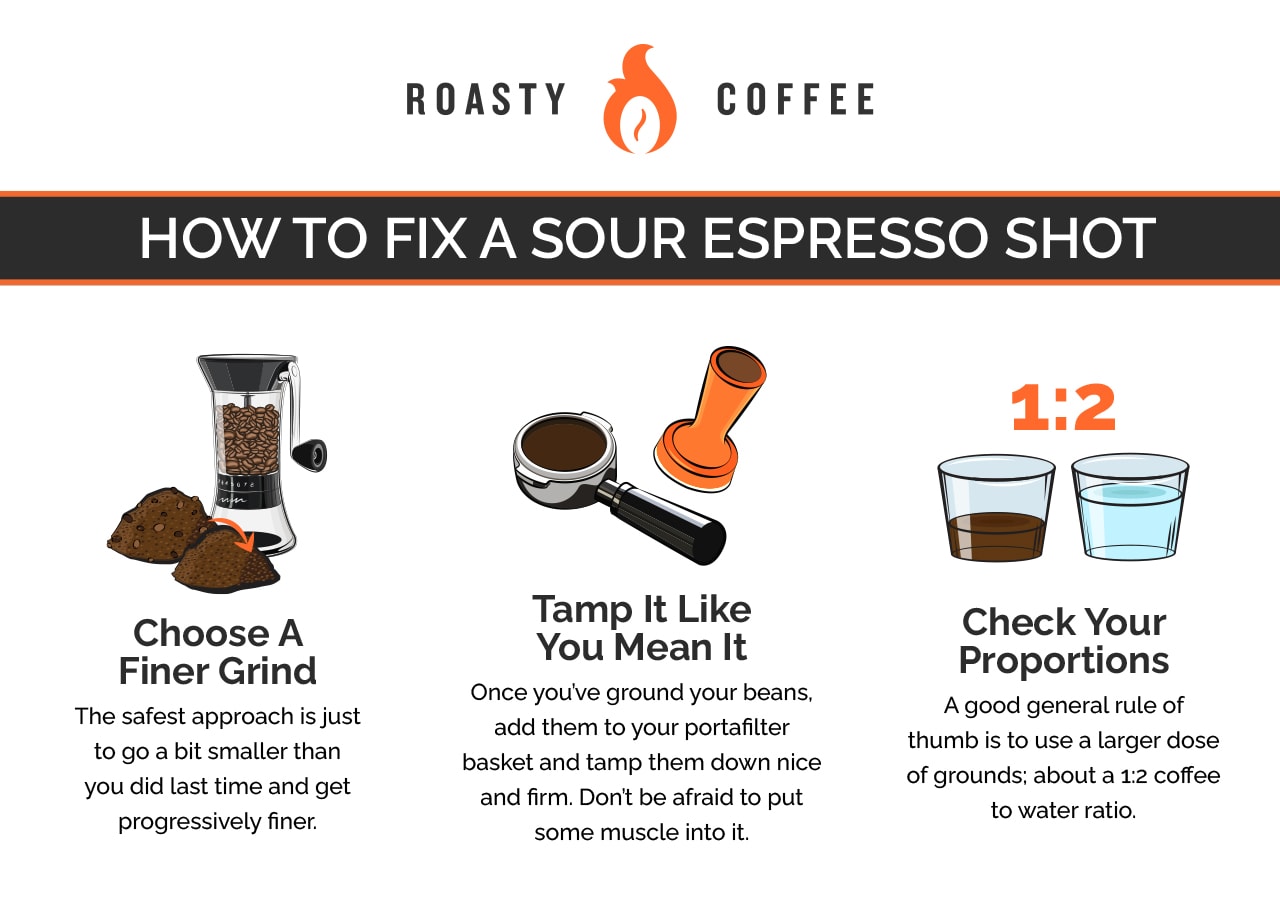In that state of near-transcendent reverie that sets in just after you’ve downed your first freshly made espresso shot of the morning, what’s the first word that comes to mind? “Smooth,” perhaps? Or maybe it’s “invigorating.” Sometimes, a simple “yum” will suffice. However, if you answered “sour,” there’s a good chance that something has gone wrong.
Should Espresso Be Sour?
No.
Let me repeat that, with emphasis: No.
A single shot of espresso can be many things, but sour should never be one of them. In fact, the adjective is enough to elicit a reaction of plain horror from many espresso buffs, who would consider themselves abject failures were they to brew a shot of their beloved pick-me-up that shared its primary tasting notes with unripened fruit or Warheads candy.
A well-made serving of espresso should be bold, tangy, and faintly sweet, with a world of nuance and just a hint of pleasant bitterness. If your cup is anything else, chances are you’re not unlocking the full potential of the coffee beans you’re working with.
Why a Shot Sometimes Tastes Sour

In some cases, mild natural tartness can originate from the beans themselves.
The coffee plant is fantastically diverse with full-bodied flavor characteristics that run the gamut from bitter and earthy to bright, fruity, and—you guessed it—sour. It’s also high in citric and malic acids, the same varieties found in many citrus fruits. A slight sourness due to a high level of acidity is therefore usually no great cause for alarm.
When it comes to sour tastes in espresso, though, the issue is under-extraction nine out of ten times.
If you’re a recent initiate to the thrilling world of espresso, “extraction” is just a technical-sounding term for percolation. During the extraction process, the hot water passes through the ground beans, extracting their many toothsome compounds from ground coffee in the process.
Crafting the perfect cup of espresso is a delicate task, and there are many ways that it can go awry. In under-extraction, the water doesn’t have enough time to take on the desired properties. The result is a thin, light-colored, wholly underwhelming swill that packs a mouth-puckering bite because it contains all of the acids of the beans and little or none of their complex-tasting coffee oils.
It’s a state of affairs that sounds sad and tastes even sadder. But all hope is not lost.
Troubleshooting Sour Espresso

A sour shot of espresso can be hard to swallow for more reasons than one. Fortunately, the remedy is typically pretty easy.
Go With a Finer Grind
First of all, you’ll want to grind your beans to a finer consistency.
Finding the right coffee grind size is arguably the trickiest part of making espresso, as it depends on several different factors, including bean type, brew volume, water temperature and pressure, and personal preference. The beverage’s balancing act nature makes it tough to issue top-down guidelines that apply to all or even most espresso drinkers.
The safest approach is just to go a bit smaller than you did last time and get progressively finer until you manage to capture the peak flavor you’re pursuing.
FYI, a good burr grinder will give you all the control you could ever ask for in this area. Just be careful not to overdo it, as too fine a grind can also change the final profile of your cup for the worse.
Tamp It Like You Mean It
Once you’ve ground your beans, add them to your portafilter basket and tamp them down nice and firm. Don’t be afraid to put some muscle into it. Proper tamping is a crucial though often overlooked piece of the puzzle.
“Why?” you ask. Because it’s the culmination of the balanced flavor dynamic that begins with grinding. The finer the grind, the smaller the individual grounds. The smaller the grounds, the more tightly they’ll fit together. And the tighter the fit, the longer it takes water to filter through.
In other words, artful tamping serves to slow the flow of water, extend your overall extraction time, and create a beautiful shot.
Check Your Proportions
Last but certainly not least, it’s also essential to make sure you’re using enough coffee for the amount of espresso you’re brewing. If not, no tricks, tweaks, or hacks will be able to save it—even with a fine grind and spirited tamping, there just won’t be enough substance there for the water to absorb.
A good general rule of thumb is to use a larger dose of grounds; about a 1:2 coffee to water ratio. But, you can tinker with the exact quantities as you see fit.
Wrap-Up
Don’t let the sourness of under-extracted, bad espresso rub you the wrong way. With a few quick recalibrations and a willingness to experiment, you can follow up a shot that’s off the mark with one that’s as balanced and delectable as it deserves to be.
Happy Caffeinating!







